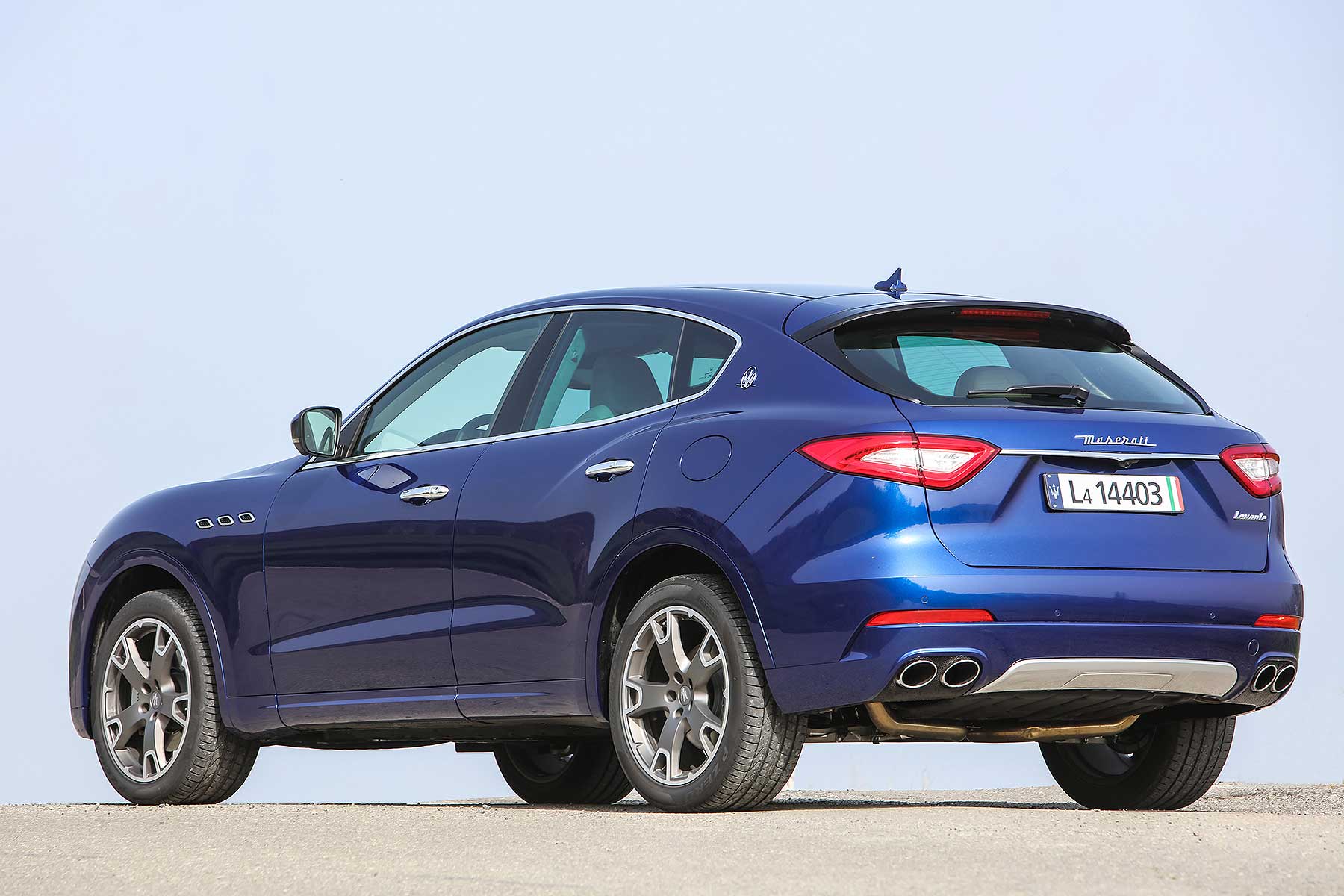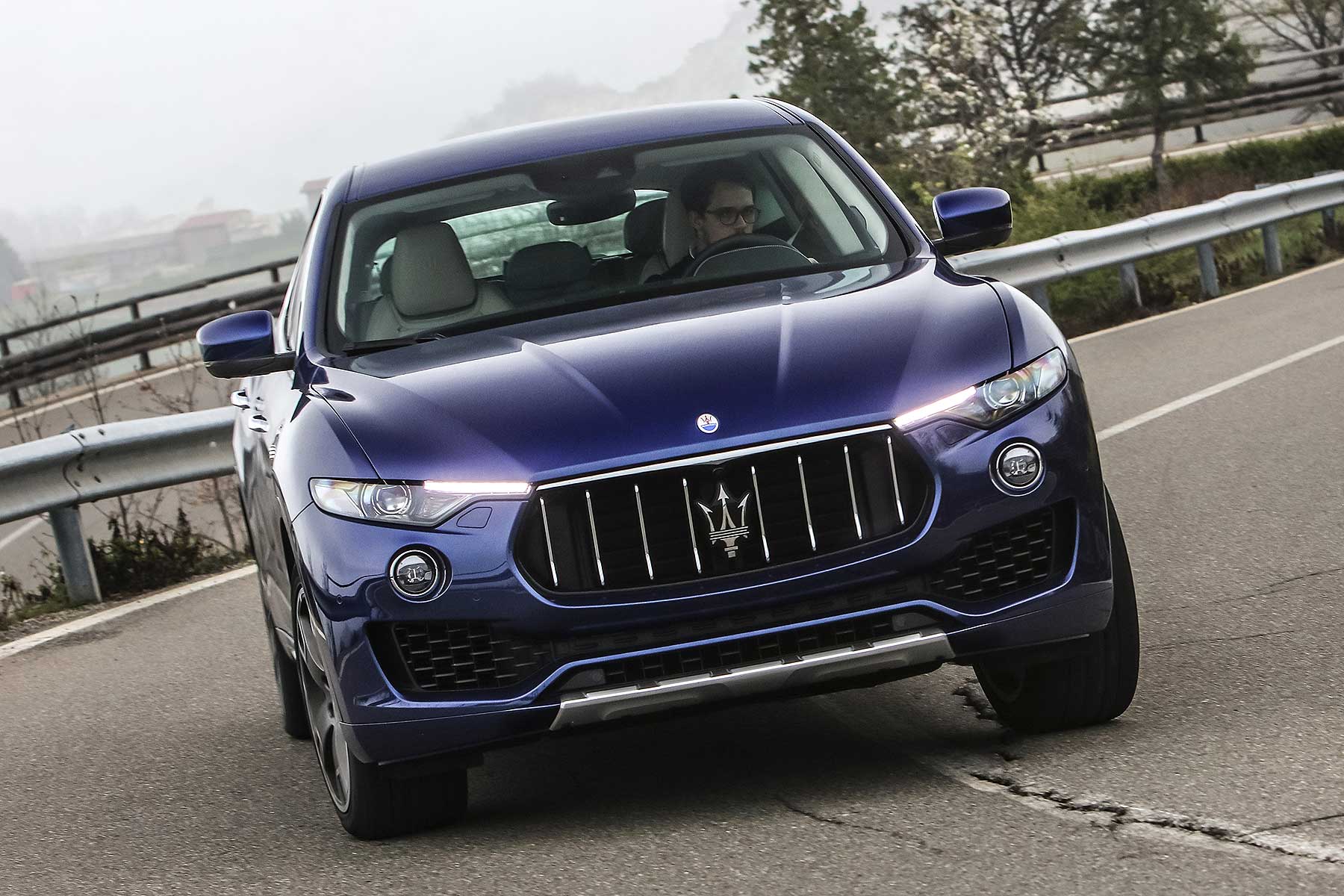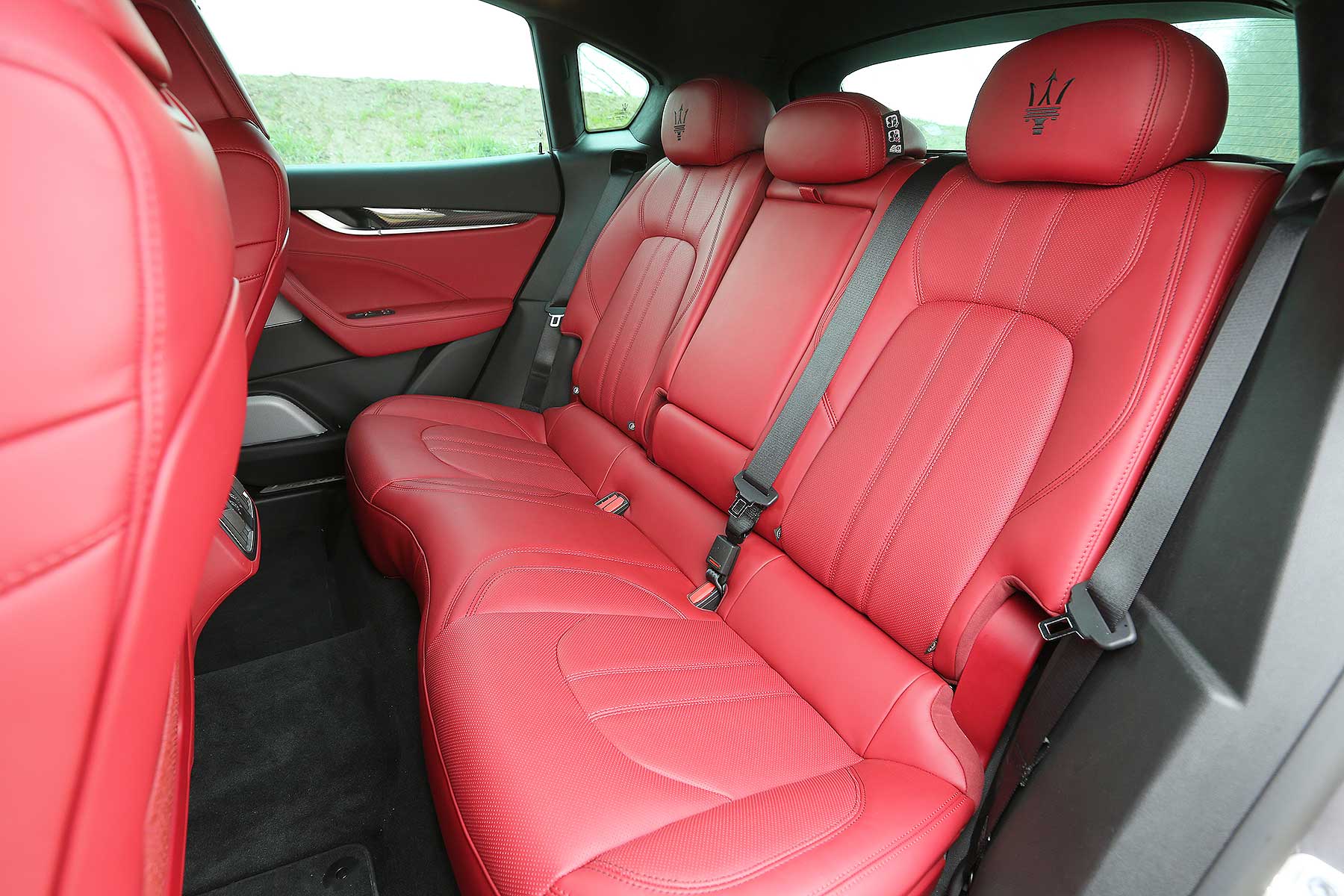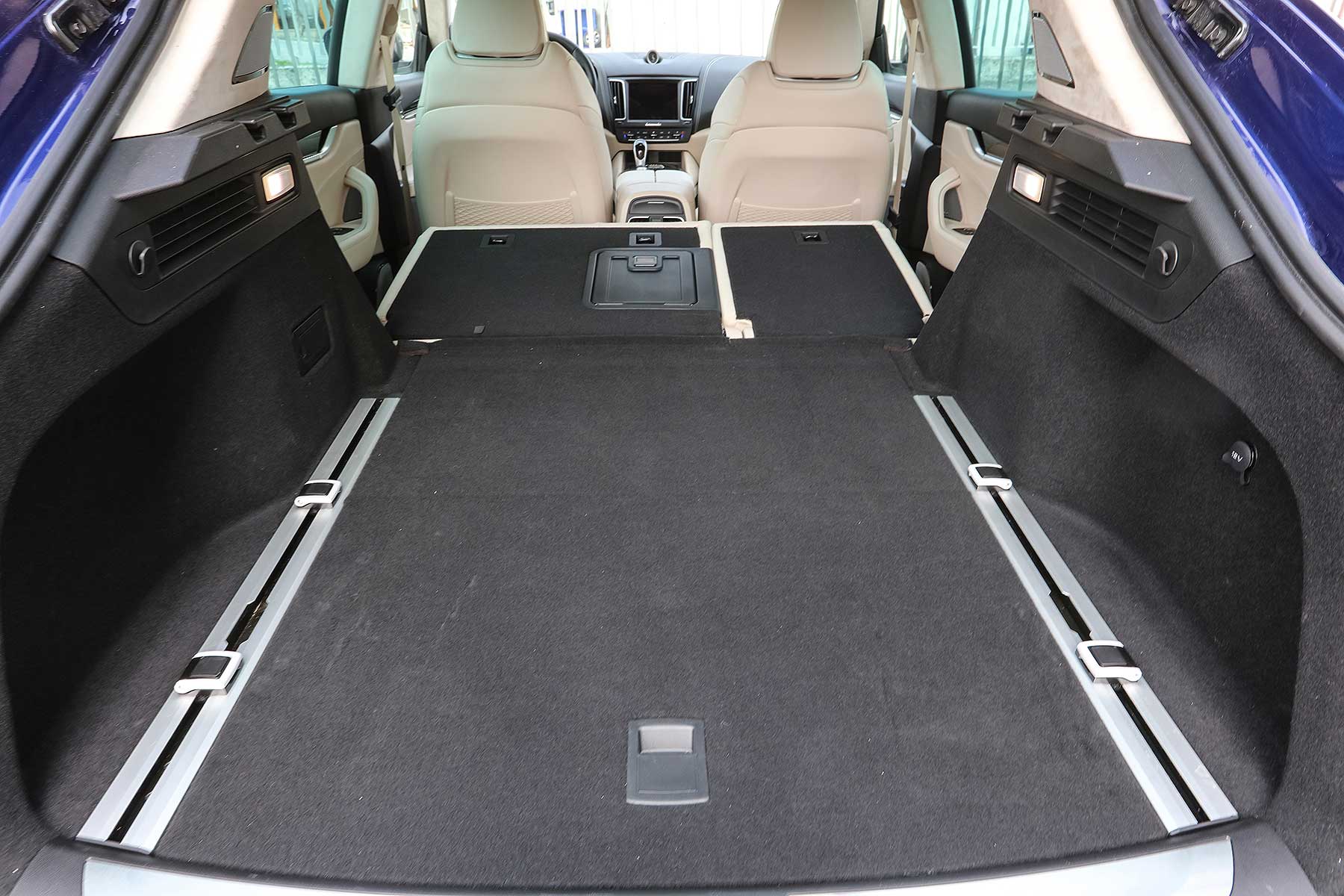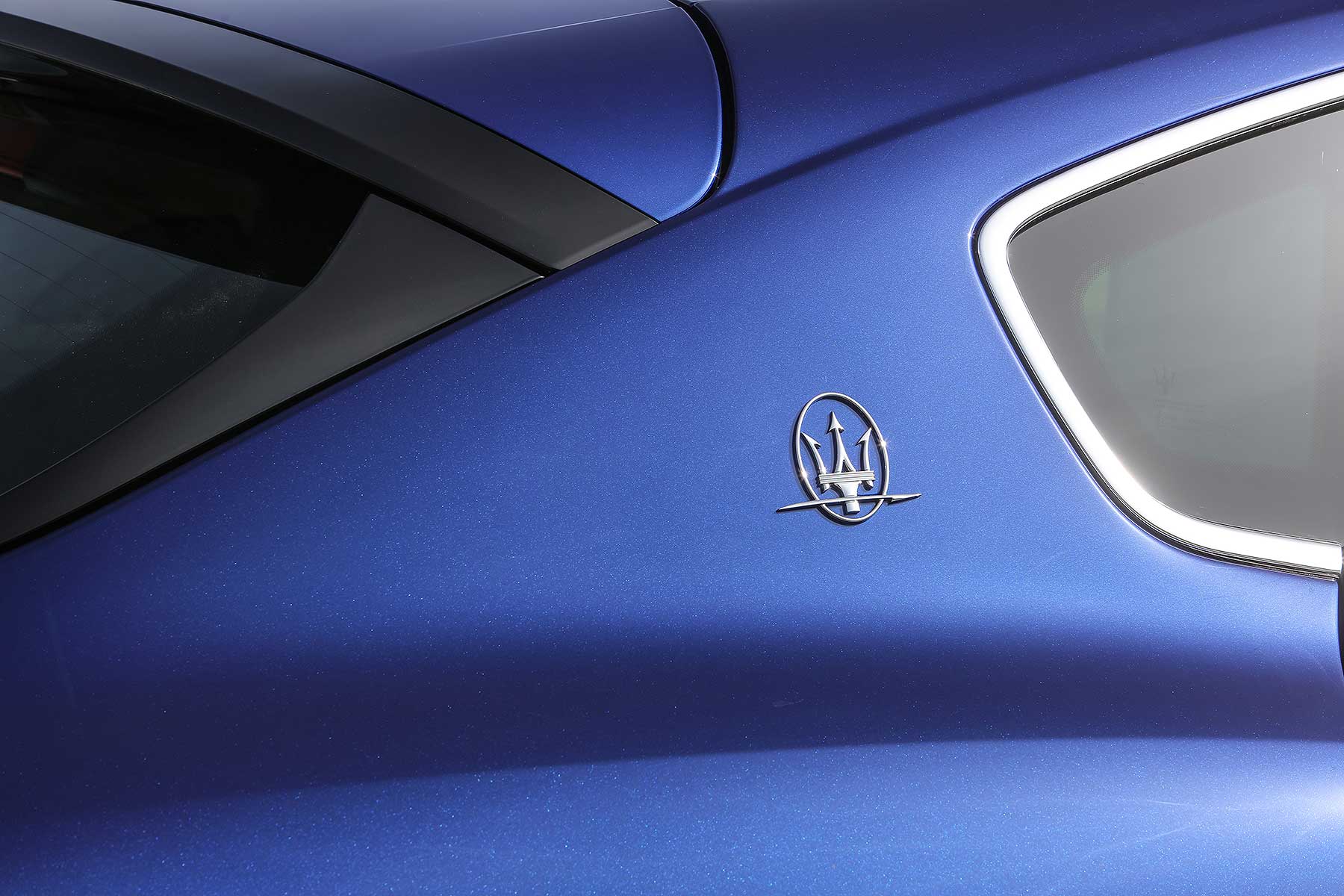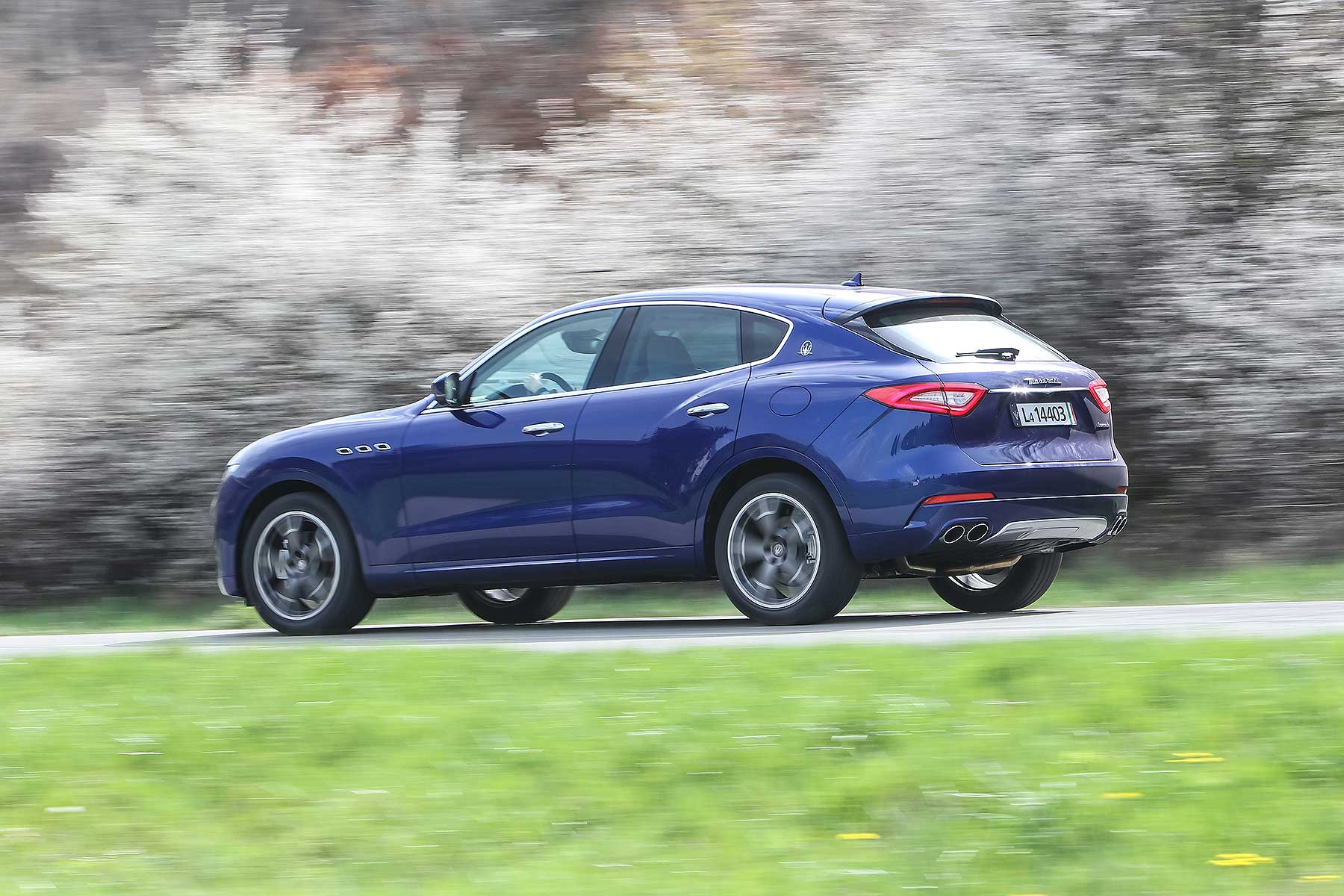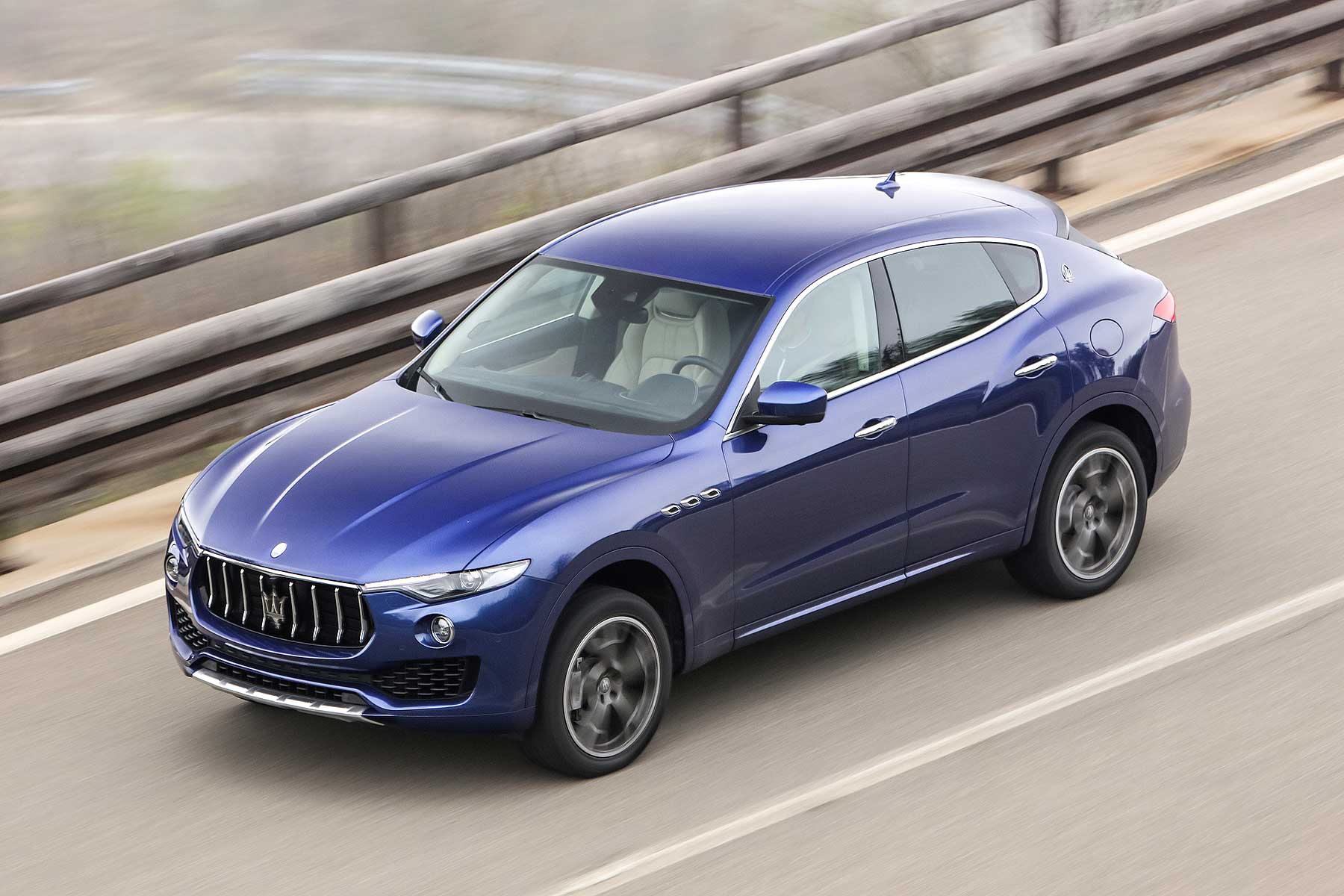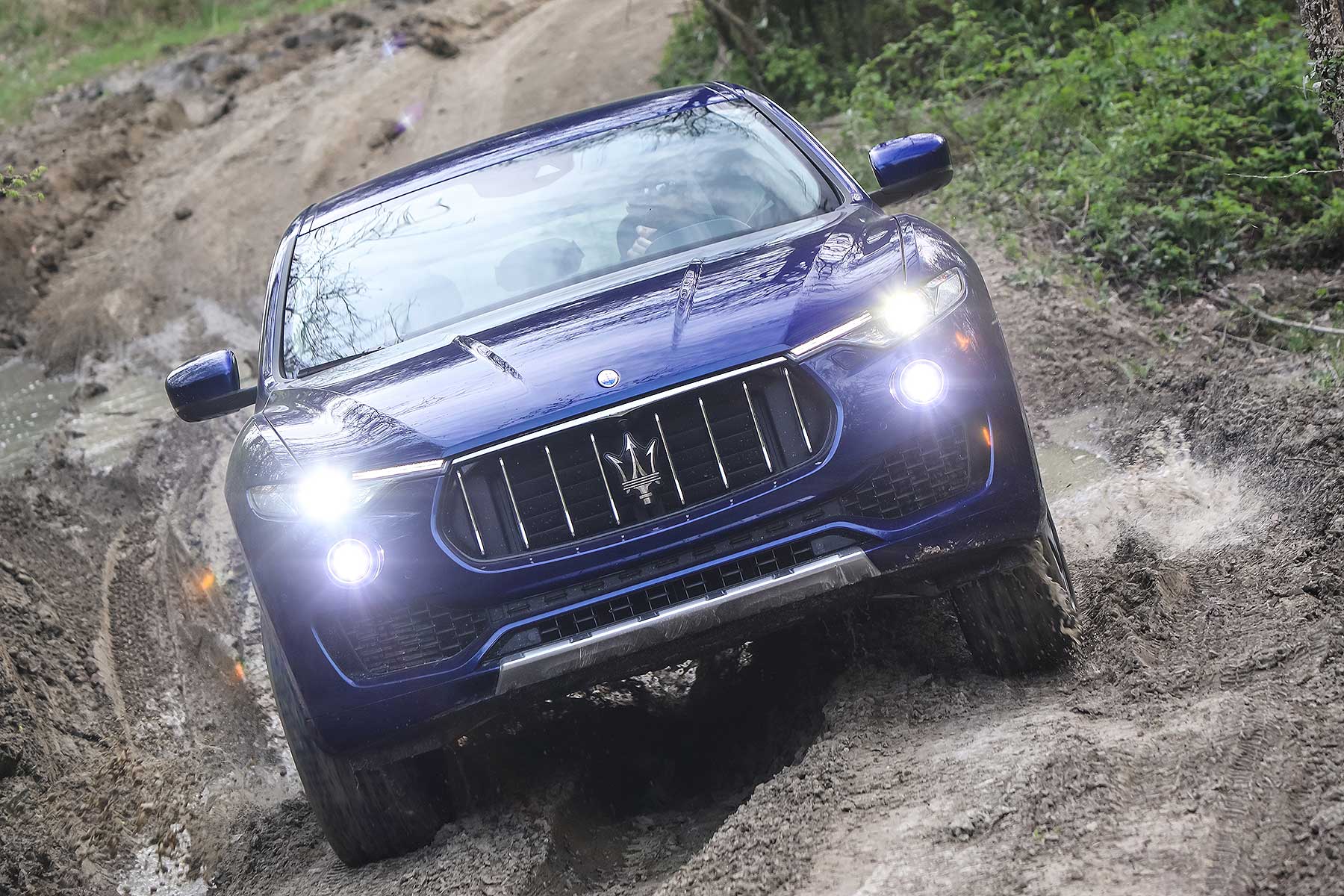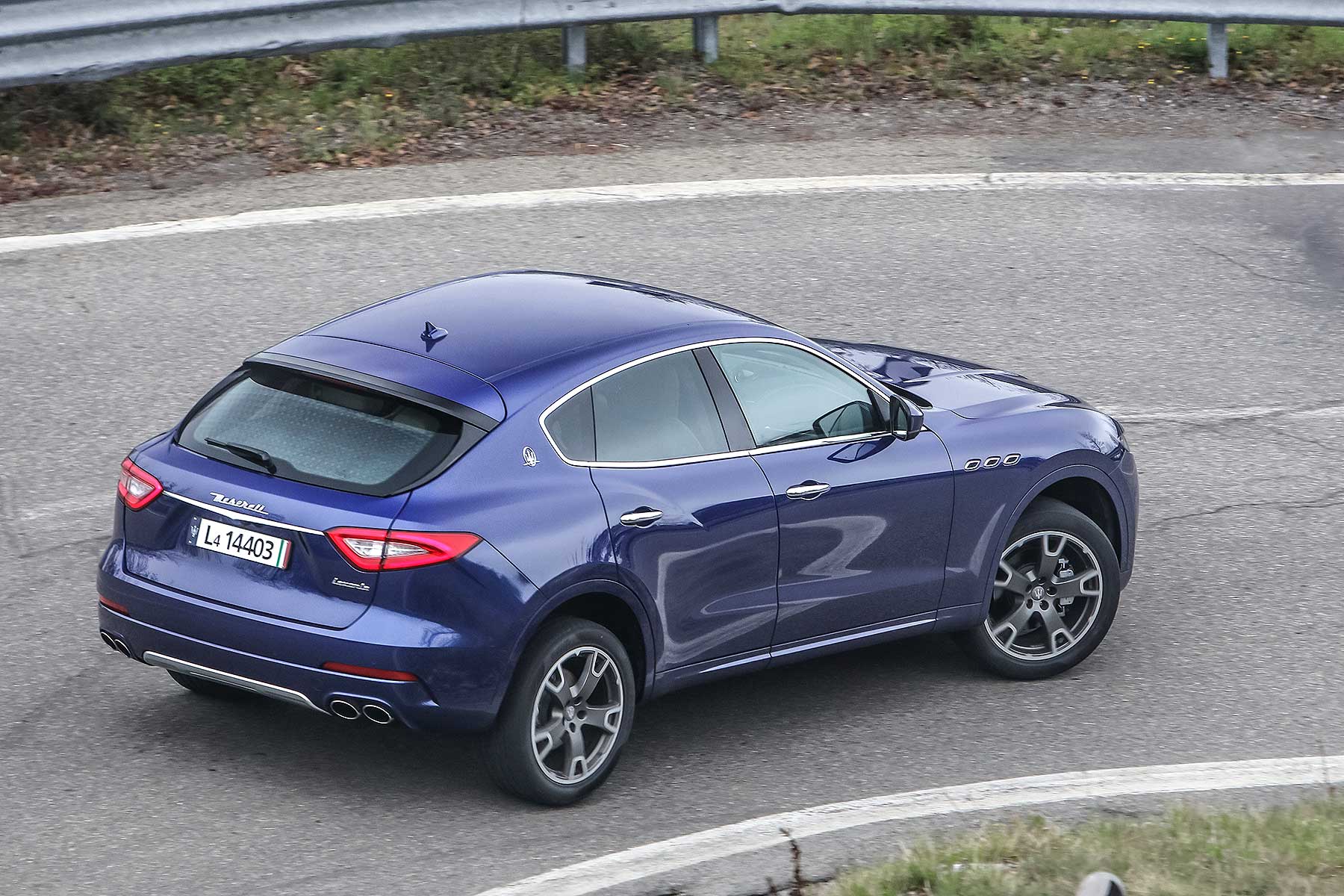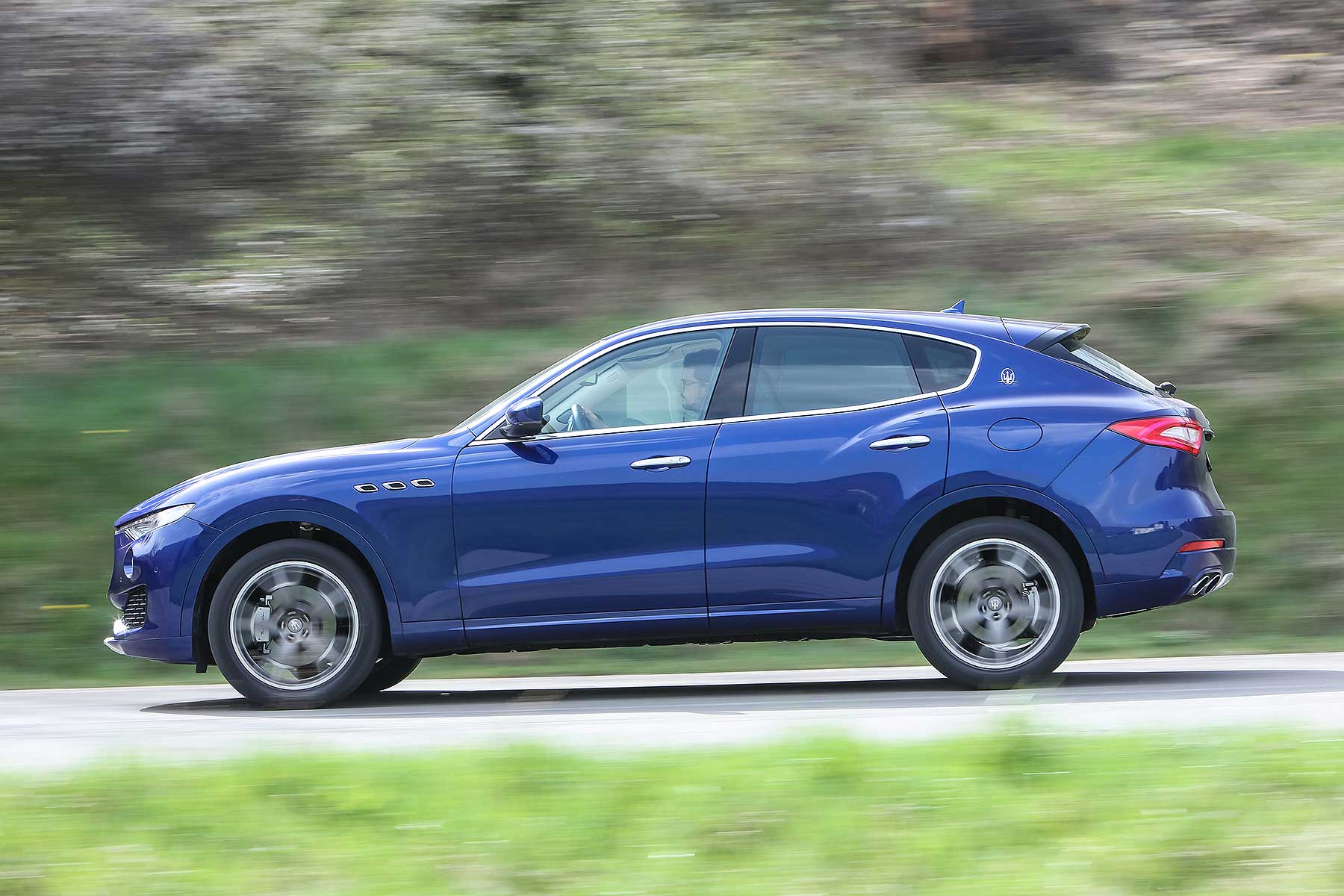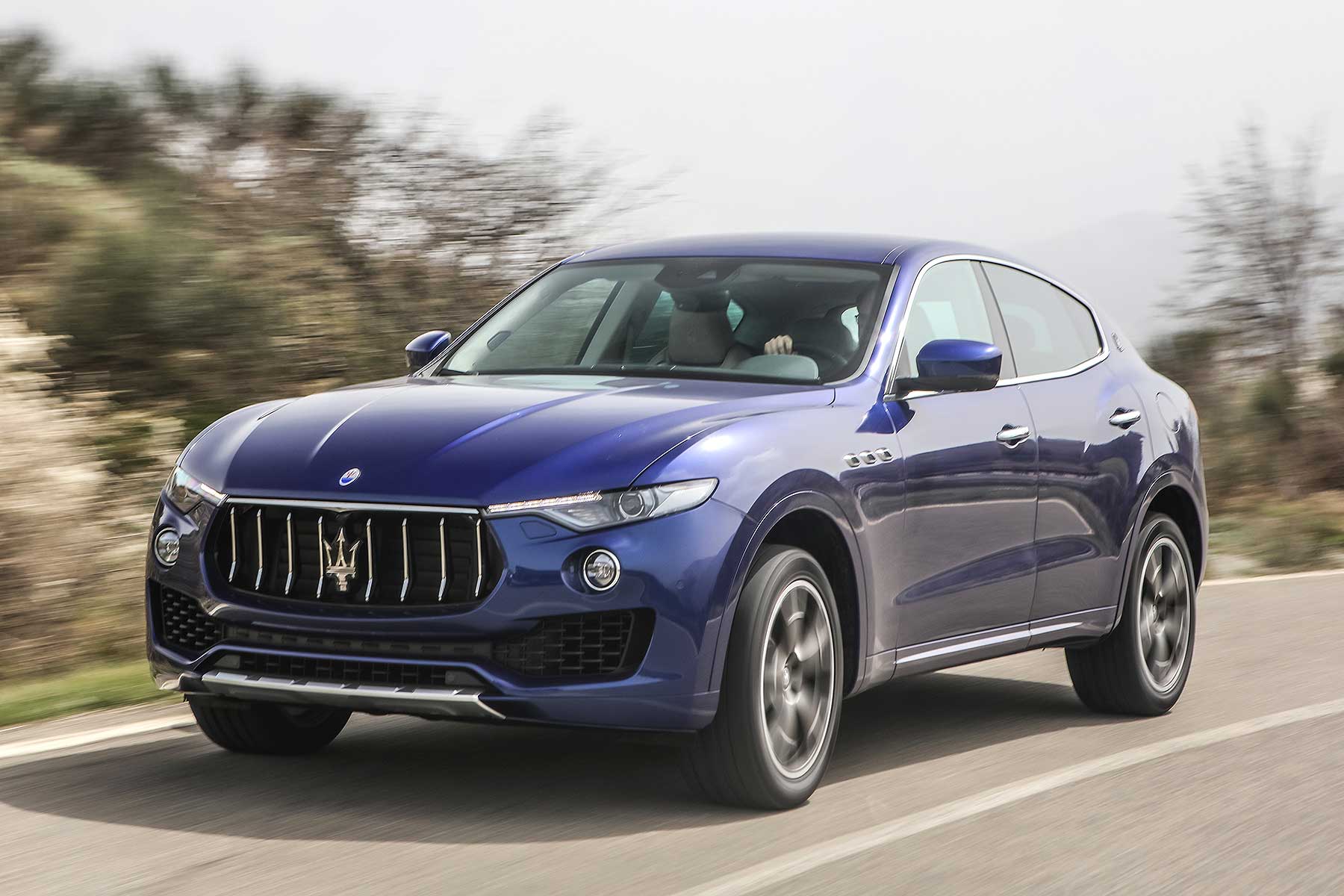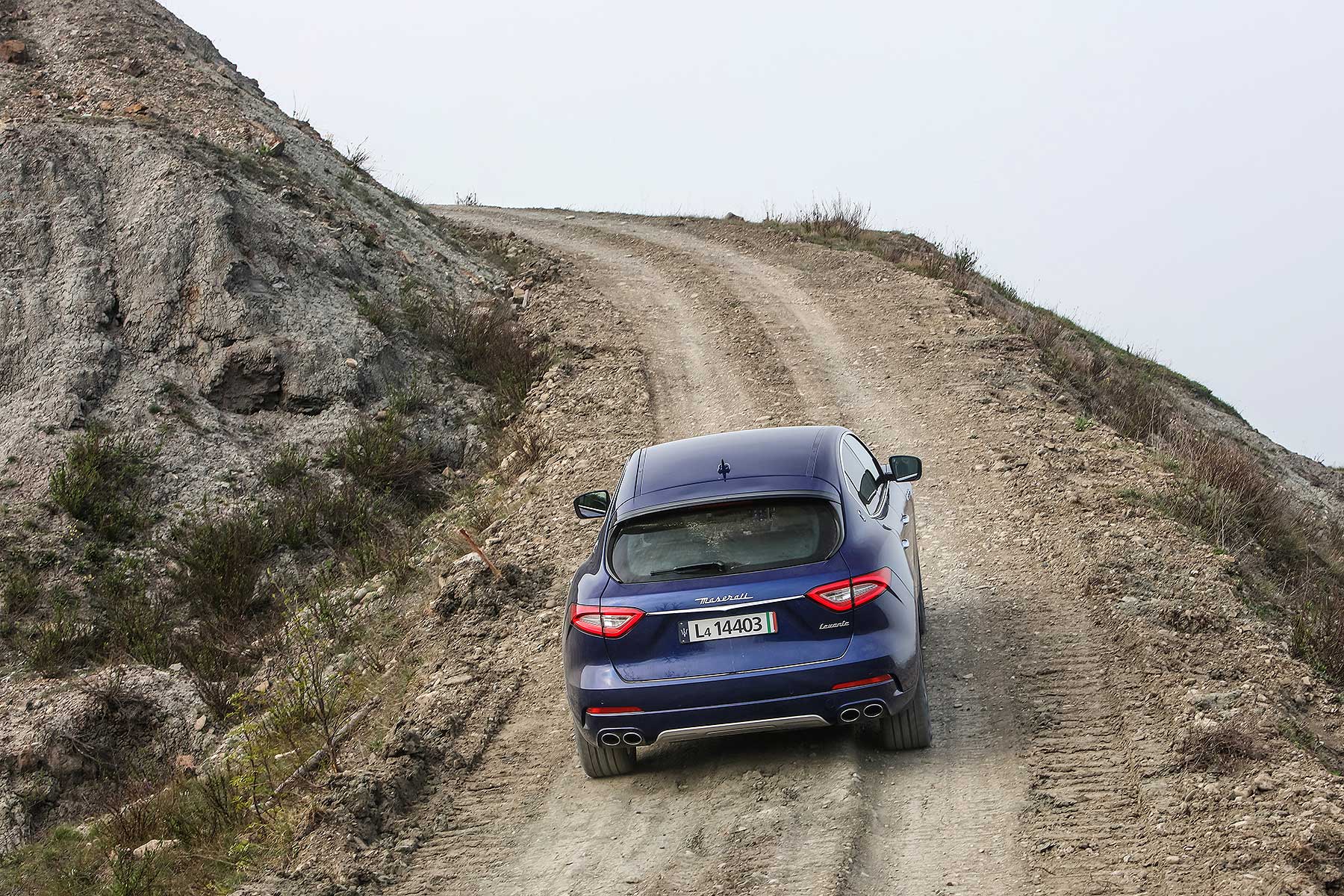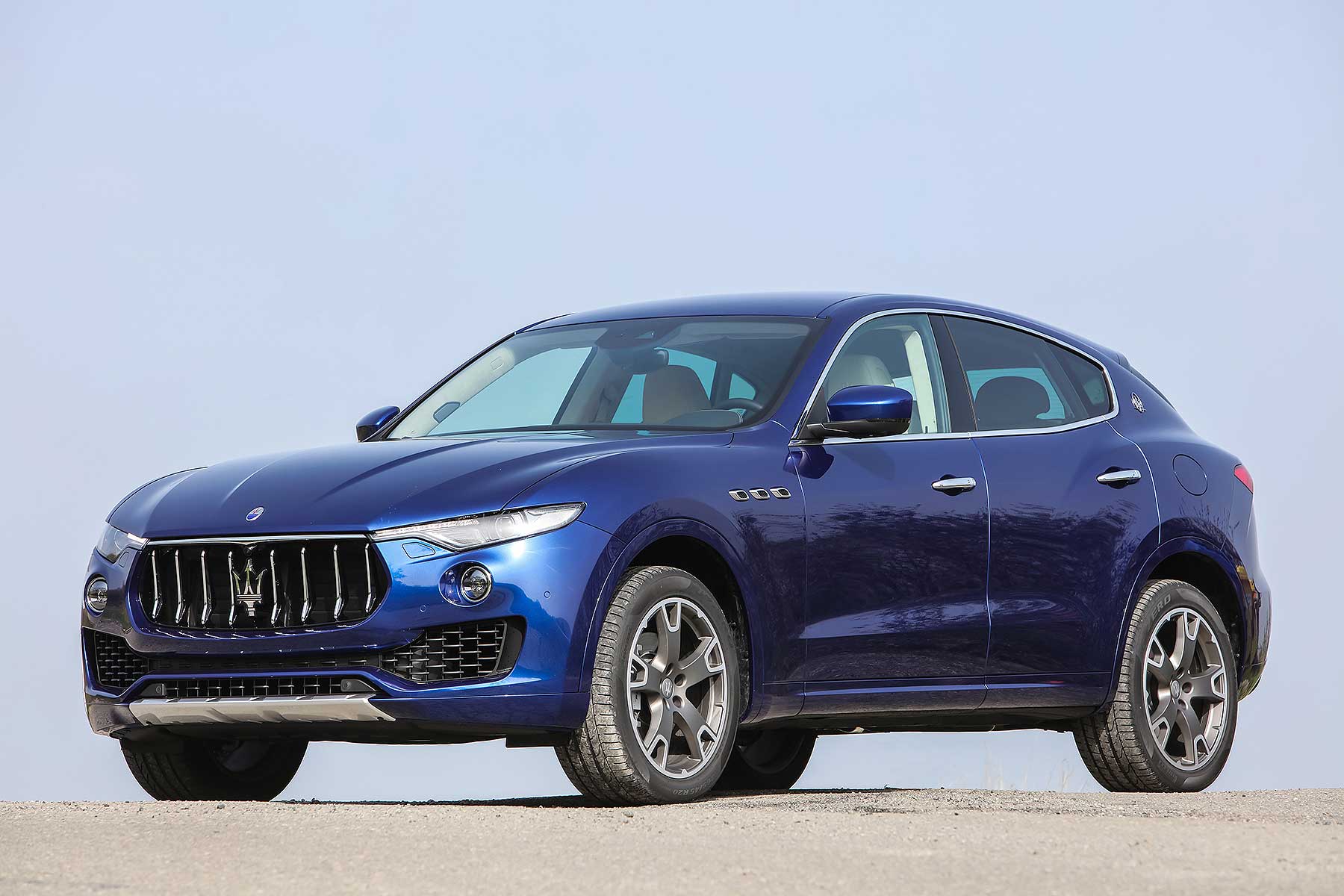 The Maserati Levante is the first SUV from the famous Italian brand and thus, by its nature, a controversial one. Fans of sports cars swooned when Porsche said it would make an SUV yet the smash-hit success of the Cayenne has led every premium brand worth its salt to follow: now Jaguar’s made one, Lamborghini’s planning one and Maserati’s launching one.
The Maserati Levante is the first SUV from the famous Italian brand and thus, by its nature, a controversial one. Fans of sports cars swooned when Porsche said it would make an SUV yet the smash-hit success of the Cayenne has led every premium brand worth its salt to follow: now Jaguar’s made one, Lamborghini’s planning one and Maserati’s launching one.
The Levante is a large SUV, more than 5 metres long, so it competes with the Cayenne rather than the Porsche Macan. The five-seat model uses the same architecture as its turnaround Quattroporte and Ghibli, including the same engines: V6 turbo, either petrol or diesel.
Prices will start at around £53,000 – £55,000 when ordering starts in the UK this summer. First deliveries will be in the autumn and Maserati reckons it will double its British volume, to around 3,000 units a year. The Levante is a big deal for the revered, revived and growing Italian premium brand.
Will this be the car that does a Cayenne for Maserati, giving it the financial strength to grow and launch beautiful new models such as the Alfieri concept? Is it a compelling new sports SUV that drives well enough and looks good enough to sway the naysayers? To Italy, to find out.
It does look good (but you probably won’t believe me)
First thing, the styling. Social media’s first reaction hasn’t been convincing and we weren’t convinced when we saw it poorly lit in blocky white at the 2016 Geneva Motor Show. Cue the usual modern car excuse: you need to see it in the metal.
The Levante is a big car, with striking proportions – a long bonnet, a cab-back look. With its sleek roofline and bold rear haunches, it has attitude. It makes a Cayenne look a bit top-heavy and snub-nose. The grille looks enormous in images (it is enormous, intentionally), but proportionally works in the metal. Besides, modern Maserati likes big grilles.
The designer told us the front was created to make an impact, the sides to carry it off and the rear to be beautiful and elegant. The rear is the bit I kept coming back to. Its curvaceous tail and super-pumped haunches look terrific (hang the rear three-quarter visibility!) and, trident badge sitting proudly above, will sell the Levante in showrooms alone.
It’s roomy in the back and has a big boot
The Ghibli is not a roomy car. Not compared to rivals the Audi A6 and Mercedes-Benz E-Class. The Levante, which is derived from the same flexible architecture, could thus have stumbled here. It doesn’t, thanks to 5,003mm of length, 1,968mm of width and a 3,004mm wheelbase.
It’s still not particularly space efficient, not like a Jaguar F-Pace, but the sheer size liberates just enough room in the back for adults, plus a boot that’s as double-take big as the Ghibli is small. 580 litres is commodious and the beautifully finished trunk is long and wide, if not the deepest. Details like the delightful Alcantara parcel shelf compensate (and all have an electric tailgate).
Front seats are firm and supportive, more like sports saloon than SUV seats (a theme, this…) and the two outer seats in the rear are semi-bolstered, which is a nice touch. You even get a decent view out around the front seats, and the same ‘stay-clean’ door openings as a Land Rover (and Jaguar F-Pace).
Cabin fit and finish is impressive and the luxury feel is everywhere
Another potential hurdle for Maserati: quality. Porsche is a formidable rival. What must have been an immense effort has delivered a Levante up to standard.
You sit SUV-high in step-up interior but still feel like you’re sitting low, and Maserati cowled dials, steering wheel and pistol-grip gearshifter are further saloon cues. It has lots of depth, acres of beautiful leather (in the test cars at least) and a clear, contemporary modernity no other current Maserati matches.
There’s ergonomic attention to detail and, most significantly, the step-up material quality. It’s hard to find jarring low-rent plastics, impossible to find old Fiat hand-me-down switchgear. Maserati has stepped up its game here and it’s evident throughout.
Surprise: the diesel sounds good. No surprise: the Ferrari-built petrol sounds sublime
The 275hp 3.0-litre V6 turbodiesel is built by an Italian company called VM. In the Ghibli, it’s OK: in the Levante, it’s very good. It’s smooth, more than fast enough (0-62mph in 6.9 seconds) and responsive. It also sounds like a throbby V8, thanks to two Maserati Active Sound actuators on the exhaust tailpipes.
Ferrari co-developed and builds the Levante 3.0-litre petrol V6, offered in 350hp and 430hp guise. The 430hp version sounds sublime. It growls, wails, the exhausts bark and yowl at high revs, indecently and brilliantly loudly. It’s very Italian and very wonderful.
Don’t get caught at low revs in the diesel: it’s a single turbo and the 2,200kg kerbweight shows when it’s not spooling fast enough. The petrol is much better here: it’s parallel twin turbo so there’s less inertia to overcome at low revs: peak torque of 427lb-ft is from 1,750rpm, rather than 2,000rpm in the diesel. Clearly, every little helps.
It handles far better than you’d ever believe a 2.2-tonne SUV could
Maserati hasn’t kept the weight down but it has kept the centre of gravity down, lower than any rival SUV, in fact. It has a 50:50 weight distribution, rear-biased four-wheel drive system, limited-slip differential, torque vectoring and on-demand Q4 AWD.
Roll is minimised and it’s both not so nose-heavy in corners and well balanced as you press on. Almost uniquely for a new-launch car, it also has hydraulic power steering, which is positive, well-weighted and nuanced enough to wish it didn’t use so much fuel.
The sportiness and fluidity of the big Levante is a surprise. It genuinely handles engagingly, confidently, accurately, with driver-pleasing dynamism and none of the soggy wallow you’d fear from an SUV. It certainly has much more integrity than we were expecting, this Maserati.
It can off-road
Early in Levante development, Maserati sought advice from the SUV experts in the Fiat Chrysler Automobiles group – Jeep. There are worse 4×4 gurus to pick the brains of.
It then went and did its own thing, with its own technology. The combination has created an SUV able off-road, so long as it’s not too extreme: pretty much anything any Levante owner will ask of it, the Maserati SUV copes.
Traction is good, grip is good, the various systems and adjustable ride height are smart and the electronics are discreet, helpful, well-developed systems that show the finesse and expertise of presumably having Jeep’s watchful eye via a plane from Toledo, Ohio if they wanted it.
It has air springs and Skyhook dampers – as standard
Key to it driving so well is the expensive standardisation of air springs and Skyhook active dampers. We didn’t want it to drive like a traditional SUV, the chief engineer told me: so we had to have them.
Air springs means a cushioned, absorbent ride at speed (despite the 20-inch wheels of the test car); Skyhook means it’s tied down and free from the float less sports-focused air-sprung cars exhibit. Air springs also means adjustable ride height, Skyhook means at-a-press suspension stiffening without the harshness that comes with it.
The system gives a special, premium feel to how the Levante rolls along, and the configurability, from two levels of sport to a full-travel off-road mode, may require a confusing combination of pressing buttons and toggling levers, but delivers in practice.
It has a fancy new infotainment system with Apple CarPlay
Existing Maserati infotainment systems are clunky and past-era. Not ideal when premium rivals are pushing ahead and buyers are increasingly buying cars based on smartphone-like gadgetry. Enter an all-new infotainment system that’s night and day better.
It looks classier, with crisper graphics and a nicer capacitive touchscreen; even better, it incorporates Apple CarPlay, which will be an instant win for anyone who’s ever tried it. Simply plug in your iPhone and you’re away.
It has fancier mapping, prettier logic and is backed up by a more comprehensive colour screen in between the analogue dials The work’s been worth it here, Maserati.
It’s a luxurious car to drive and be driven in
The Levante has an appealing roll-along feel that’s luxurious, refined and together. Its body control is well bred, the ride is generally quiet and the engines, while usually audible (intentionally – it’s part of the sporty character), make a rich and premium range of noises.
It’s a car that has appeal and makes you feel good about yourself, while also proving adept on the road and, in the same way that SUVs from Porsche and Jaguar are genuine Porsches and Jaguars, justifies Maserati’s tagline that it’s the Maserati of SUVs.
Maserati Levante review: first verdict
The Maserati Levante surprised us. It is a convincing luxury SUV with a sporty character and impressive driving manners. The interior is roomy enough, quality and tactility is high and Maserati has brought key areas such as infotainment and build quality up to scratch.
You may not be sure of the looks, but reserve judgement until you see the big Levante in the metal. A potentially well-priced large SUV that brings something new to the market, it shows that Maserati can make an SUV – an impressively rich and appealing one at that.
For
- Good to drive; fun and comfortable
- Charismatic engines
- Unexpected quality and practicality
Against
- Styling and concept are proving divisive
- Roomy enough but not hugely space-efficient
- Premium diesel thirst; good, no more
Maserati Levante: need to know
- It’s a 5-metre long large premium SUV that competes with the Porsche Cayenne
- Prices start from £53,000-£55,000
- A 275hp V6 diesel engine is the only officially confirmed engine in the UK but the CEO says a 430hp Ferrari-built model “will be sold in right-hand drive”
- Ordering opens in the summer and deliveries begin in the autumn
- There are models that do 0-62mph in 5.2 seconds, reach 164mph, average 39.2mpg and emit 189g/km CO2
2016 Maserati Levante: specifications
Model tested: 3.0 V6 diesel
Engine: 3.0-litre V6 turbodiesel
Price: From £53,000 – £55,000 (est)
Power: 275hp
Torque: 442lb-ft
0-62mph: 6.9secs
Top speed: 143mph
Fuel economy: 39.2mpg
CO2 emissions: 189g/km
Length/width/height: 5,003/1,968/1,679mm
Boot space: 580 litres
Kerb weight: 2,205kg
